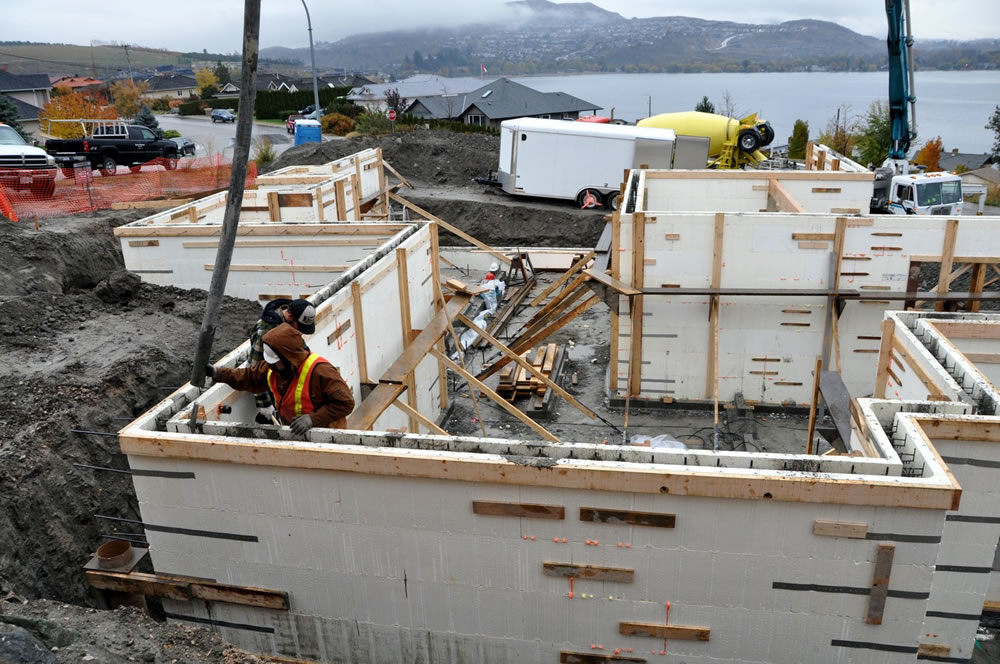

They are also roughly six (6) times larger than one CMU block. ICF units are incredibly light weight compared to a conventional concrete CMU block. The structural integrity of the concrete will remain intact during most wildfires. The concrete inner layer will not burn unless it is exposed to thousands of degrees Fahrenheit.

The EPS foam in Build Block ICF is manufactured with flame retardant additives that help restrict the spread of fire. The project that we are using ICF on is located in a high fire severity zone, which means we are required to construct the house out of primarily noncombustible or fire resistive materials. California has been plagued by extreme wildfires and we are constantly searching for ways to make our homes and buildings more fire resistant. For us, since we do most of our work in California, ICFs fire resistive qualities are attractive. In addition to their energy performance, ICF wall systems hold up well to natural disasters such as earthquakes, extreme wind loads, insect invasion, rot and fire. Resistance to Fire and Other Natural Disasters The result is a more uniform and stable internal temperature of the house. Concrete has the natural tendency to hold onto its temperature for as long as possible, gaining or losing heat gradually over time which slows down the transfer of heat through the wall. Thermal mass is the ability of a material to store and transfer heat. The concrete inside of the ICF wall also helps to improve energy performance by acting as a thermal mass. A thermal break drastically minimizes the transfer of heat through the wall. The EPS foam helps minimize heat loss/heat gain through the wall by creating a thermal break. With ICFs, there’s minimal thermal bridging because the exterior and interior layers of the wall are a continuous layer of EPS foam. We want to avoid thermal bridging in our wall construction as much as possible and minimize uncontrolled heat gain/loss. Depending on the size of the house or building, this can result in thousands of thermal bridges where unwanted heat can travel in and out of your building. Although you may have great insulation between the studs, every 16” you will have a thermal bridge. Why do conventional wood framed homes have a hard time competing with the performance and energy efficiency of the ICF wall systems? With conventional stud framing, at each stud where the insulation breaks, the interior and exterior temperatures can travel in and out of the house through the stud. A smaller sized HVAC system usually means lower upfront costs to the owner for HVAC equipment. Because an ICF wall is much more effective at stabilizing internal temperatures, the HVAC system does not need to compensate for excessive fluctuations in temperatures that you would typically find in a conventional wood stud framed building. With an ICF envelope, HVAC units can sometimes be sized much smaller than they would be with a conventional wall assembly.


 0 kommentar(er)
0 kommentar(er)
